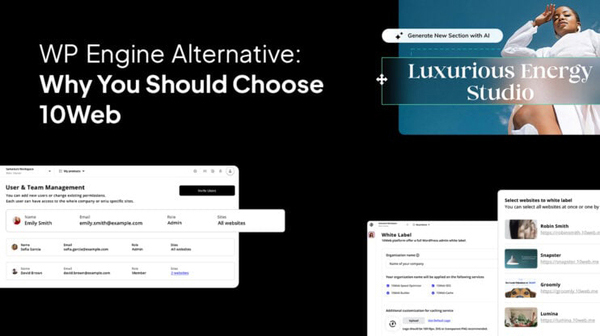Website Design Charlotte FAQ
Website Design Charlotte Solutions
Website Design Charlotte
In today’s digital age, having a strong online presence is essential for businesses of all sizes. A well-designed website can help attract new customers, showcase products and services, and establish credibility in the marketplace. However, many business owners are hesitant to invest in web design due to concerns about cost. In this article, we will explore the factors that can influence the cost of web design and provide guidance on how to ensure that you get the best value for your money.

How to Master Website Design Charlotte
Website Design Charlotte
Choosing a Domain Name
One of the first steps in building a website is choosing a domain name. Your domain name is the web address that users will type into their browser to access your site. When selecting a domain name, it is essential to choose a name that is easy to remember, relevant to your brand or business, and available for registration. It is also important to consider the domain extension, such as .com, .org, or .net, as different extensions can convey different meanings to users.
Selecting a Hosting Provider
After selecting a domain name, the next step is to choose a hosting provider for your website. A hosting provider is a company that stores your website files on a server and makes them accessible to users on the internet. When selecting a hosting provider, it is essential to consider factors such as uptime, security, storage space, bandwidth, and customer support. It is also crucial to choose a hosting plan that aligns with the needs and goals of your website.
Designing the Layout
Once you have registered your domain name and selected a hosting provider, the next step is to design the layout of your website. The layout of your website includes elements such as the header, footer, navigation menu, content area, and sidebar. When designing the layout of your website, it is essential to consider factors such as usability, accessibility, and aesthetics. It is also important to ensure that your website is responsive, meaning it adapts to different screen sizes and devices, such as desktops, laptops, tablets, and smartphones.
Creating Content
After designing the layout of your website, the next step is to create content for your site. Content includes text, images, videos, and other multimedia elements that communicate your message to your target audience. When creating content for your website, it is essential to consider factors such as readability, relevance, and search engine optimization (SEO). SEO is the process of improving your website’s visibility in search engine results pages, which can help drive organic traffic to your site.
Adding Functionality
In addition to design and content, websites often include functionality that enhances the user experience and enables users to interact with the site. Examples of website functionality include contact forms, social media integration, e-commerce capabilities, and multimedia players. When adding functionality to your website, it is essential to consider factors such as usability, accessibility, and security. It is also important to test your website regularly to ensure that all functionality is working correctly.
Optimizing for Performance
Once you have designed your website, created content, and added functionality, the final step is to optimize your site for performance. Website performance refers to factors such as speed, loading times, and responsiveness, which can affect user experience and search engine rankings. To optimize your website for performance, you can use tools such as Google PageSpeed Insights and GTmetrix to identify and fix performance issues. It is also crucial to regularly update your website, monitor performance metrics, and make necessary adjustments to ensure that your site is running smoothly.
First and foremost, it’s important to understand the different types of web hosting available. The most common types of web hosting are shared hosting, VPS (Virtual Private Server) hosting, dedicated hosting, and cloud hosting.
Shared hosting is the most basic and cost-effective form of web hosting, where multiple websites are hosted on a single server. This means that resources such as storage, bandwidth, and processing power are shared among all websites on the server. While shared hosting is suitable for smaller websites with low to moderate traffic, it may not be the best option for high-traffic or resource-intensive websites.
VPS hosting is a step up from shared hosting, where a physical server is divided into virtual servers, each with its own dedicated resources. This provides more control and flexibility compared to shared hosting, making it a good option for websites that require more resources but do not need a dedicated server.
Dedicated hosting involves renting an entire server for your website, giving you complete control over resource allocation and security. This type of hosting is ideal for high-traffic websites or e-commerce sites that require robust security and performance.
Cloud hosting is a newer form of web hosting that utilizes multiple interconnected servers to provide scalable and reliable hosting services. With cloud hosting, resources are distributed across multiple servers, ensuring high uptime and performance. Cloud hosting is suitable for websites that experience fluctuating traffic or unpredictable resource demands.
When comparing web hosting providers, there are several factors to consider:
1. Uptime and reliability: Look for a web hosting provider with a high uptime guarantee, ideally 99.9% or higher. A reliable hosting provider will ensure that your website is always accessible to users.
2. Performance and speed: Choose a hosting provider that offers fast loading times and efficient server performance. Slow-loading websites can deter users and negatively impact your search engine rankings.
3. Security: Make sure the hosting provider offers robust security measures, such as SSL certificates, regular backups, and malware protection, to protect your website from cyber threats.
4. Scalability: Consider whether the hosting provider offers scalability options that allow you to easily upgrade your hosting plan as your website grows.
5. Customer support: Look for a hosting provider that offers responsive customer support, preferably 24/7, to address any technical issues or concerns that may arise.
Now, let’s compare some popular web hosting providers:
1. Bluehost: Bluehost is a well-known web hosting provider that offers a range of hosting options, including shared, VPS, and dedicated hosting. Bluehost is known for its reliable uptime, fast loading times, and excellent customer support. Pricing starts at $2.95 per month for shared hosting.
2. SiteGround: SiteGround is another popular web hosting provider that is known for its high performance, security features, and responsive customer support. SiteGround offers shared, VPS, and cloud hosting options, with pricing starting at $6.99 per month for shared hosting.
3. HostGator: HostGator is a budget-friendly web hosting provider that offers a variety of hosting plans, including shared, VPS, and dedicated hosting. HostGator is known for its easy-to-use interface, uptime guarantee, and affordable pricing. Shared hosting plans start at $2.75 per month.
4. A2 Hosting: A2 Hosting is a high-performance web hosting provider that offers a range of hosting options, including shared, VPS, and dedicated hosting. A2 Hosting is known for its fast loading times, excellent uptime, and developer-friendly features. Shared hosting plans start at $2.99 per month.
5. InMotion Hosting: InMotion Hosting is a reliable web hosting provider that offers a variety of hosting plans, including shared, VPS, and dedicated hosting. InMotion Hosting is known for its fast loading times, excellent customer support, and free website migration services. Shared hosting plans start at $6.99 per month.

Website Design Charlotte Checklist
Website Design Charlotte
In today’s digital age, having a visually appealing and user-friendly website is crucial for the success of any business. A well-designed website can help attract new customers, build credibility, and increase conversion rates. However, designing a website is not as simple as it may seem. It requires a strategic and systematic approach to ensure that the final product meets the needs and expectations of both the business and its target audience. In this article, we will discuss the website design process in detail, outlining the key steps involved in creating a successful website.
Step 1: Define the Purpose and Goals
The first step in the website design process is to clearly define the purpose and goals of the website. This involves identifying the target audience, understanding their needs and preferences, and determining the desired outcomes for the website. For example, is the website meant to generate leads, drive sales, provide information, or showcase products and services? By having a clear understanding of the purpose and goals of the website, you can better tailor the design and content to meet these objectives.
Step 2: Conduct Research
Once the purpose and goals of the website have been defined, the next step is to conduct research. This involves analyzing the competition, researching industry trends, and gathering insights into the preferences and behaviors of the target audience. By conducting thorough research, you can gain a better understanding of what works and what doesn’t in your industry, helping you make informed design decisions.
Step 3: Create a Wireframe
After conducting research, the next step in the website design process is to create a wireframe. A wireframe is a visual representation of the layout and structure of the website, showing the placement of various elements such as navigation menus, headers, footers, and content sections. Creating a wireframe allows you to plan the overall design and functionality of the website before moving on to the visual design phase.
Step 4: Design the Visual Elements
Once the wireframe has been finalized, the next step is to design the visual elements of the website. This involves creating a visually appealing and consistent design that reflects the brand identity and resonates with the target audience. Elements such as color scheme, typography, imagery, and layout are carefully considered to create a cohesive and attractive design that conveys the desired message and engages users.
Step 5: Develop the Website
After the visual design has been approved, the next step is to develop the website. This involves coding the design into a functioning website using HTML, CSS, and other programming languages. During the development phase, the website is tested for functionality, responsiveness, and compatibility across different devices and browsers to ensure a seamless user experience.
Step 6: Test and Optimize
Once the website has been developed, it is essential to test and optimize its performance. This involves conducting usability tests to identify any usability issues, testing load times to ensure fast page speeds, and optimizing the website for search engines to improve visibility and accessibility. By testing and optimizing the website, you can ensure that it meets the needs and expectations of users, leading to better engagement and conversions.
Step 7: Launch and Monitor
The final step in the website design process is to launch the website and monitor its performance. This involves deploying the website to a live server, promoting it to the target audience, and tracking key metrics such as traffic, engagement, and conversions. By monitoring the performance of the website, you can identify areas for improvement and make informed decisions to optimize its effectiveness over time.


